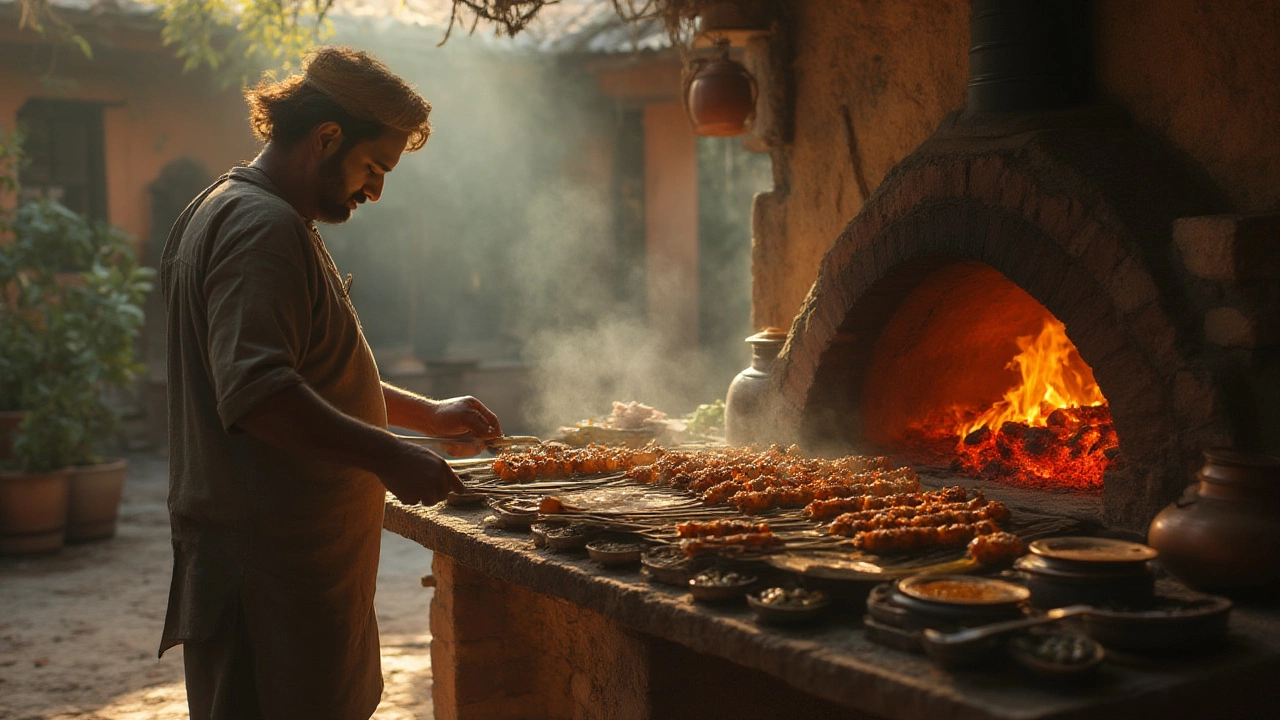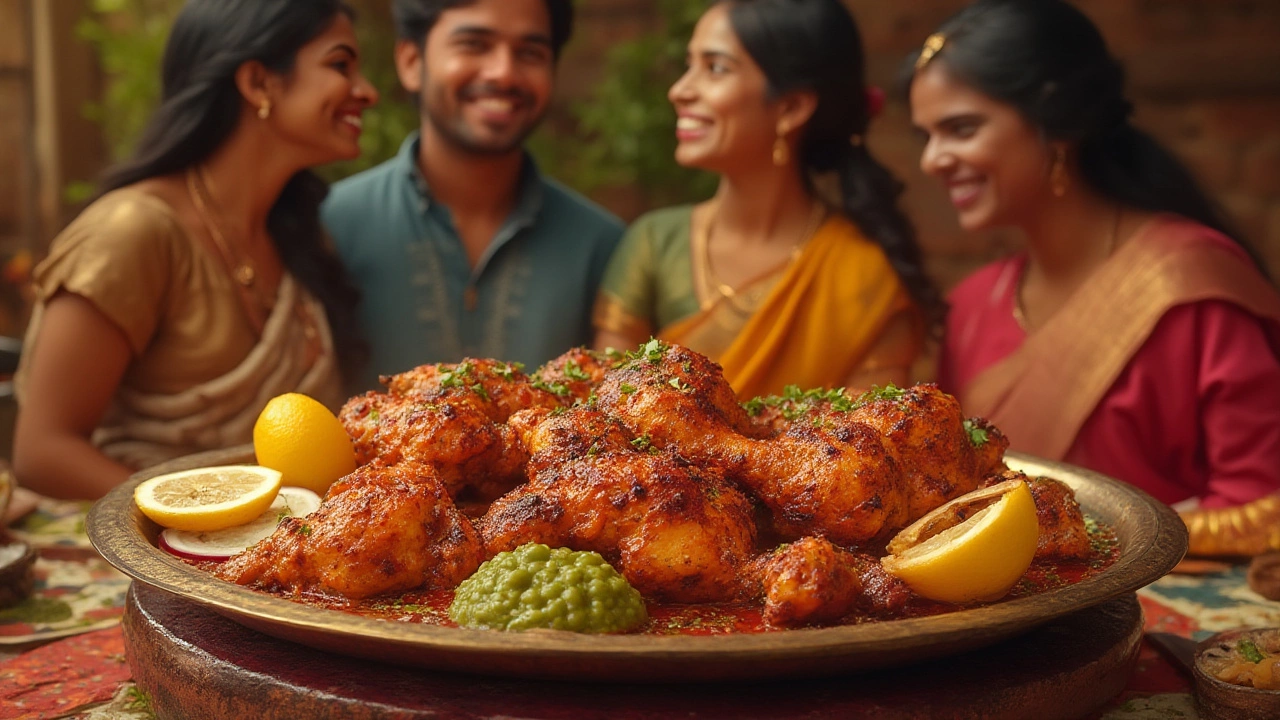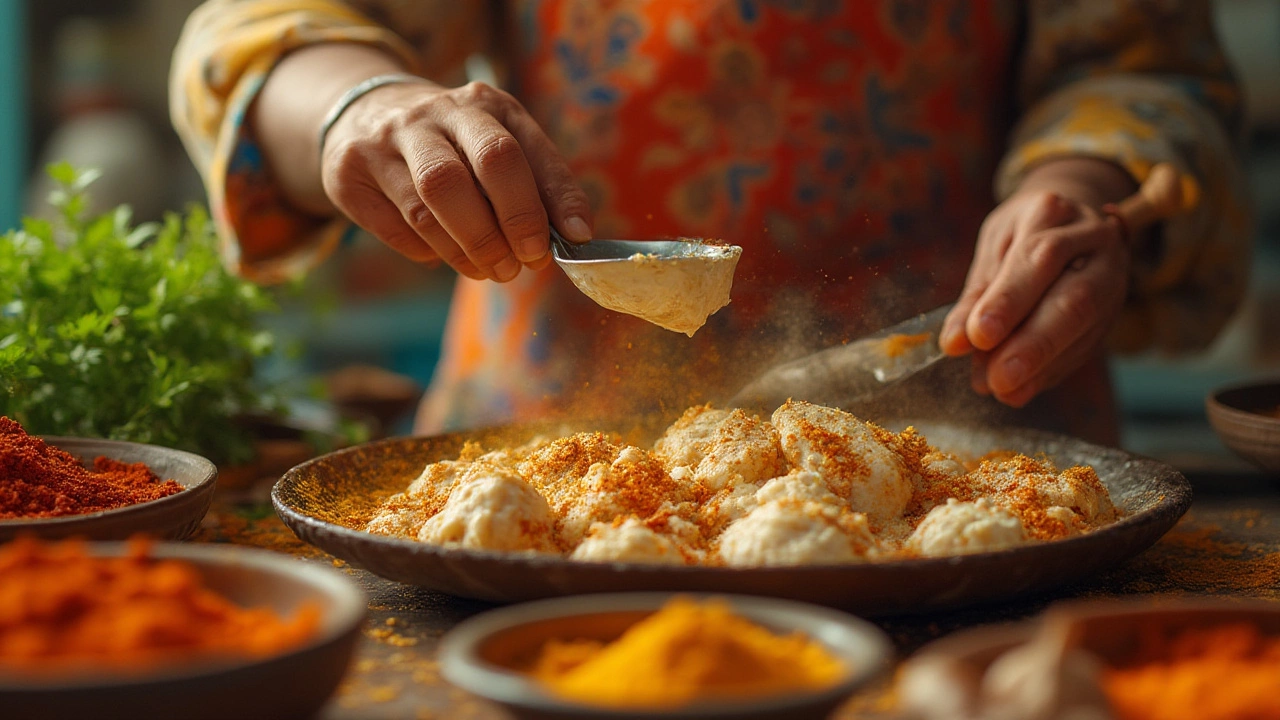Ever ripped into a piece of tandoori chicken so juicy that it practically melts in your mouth? If you’ve wondered how something that hits such high heat—sometimes over 900°F—doesn’t end up tough as a baseball mitt, you’re not alone. I used to think it was pure kitchen magic every time Kieron joked about taking out a second mortgage for an authentic clay oven in our backyard. Turns out, there’s some real science (and more than a pinch of tradition) behind why tandoori chicken is so incredibly tender. No need to fly to Delhi—let’s dig into what actually happens from marinade to tandoor, and why you just can’t replicate that texture with a plain old skillet.
Unlocking Tenderness: The Magic Behind the Marinade
Tandoori chicken starts its journey long before it comes anywhere near the smoky heat of a tandoor. The real transformation happens in the marinade bowl. Here’s where things get interesting: the classic marinade is a combination of yogurt, spices (like cumin, coriander, turmeric, chili, and garam masala), ginger, garlic, salt, and a squeeze of citrus—usually lemon or lime. Each ingredient works hard to tenderize the meat, but yogurt is the MVP. The lactic acid in yogurt gently breaks down the protein fibers in the chicken, making it more tender. Unlike a vinegar-based marinade, which can make chicken rubbery if you leave it too long, yogurt is much gentler. It slowly unwinds the tight bonds in the meat, helping it absorb all those spices. In fact, a study from the Indian Institute of Food Processing Technology in 2019 found that poultry marinated in yogurt showed a tenderness increase of up to 35% compared with no marinade at all.
Now, ginger and garlic aren’t just for flavor. They have natural enzymes—zingibain in ginger, alliinase in garlic—that work almost like meat tenderizers. These enzymes munch away at proteins, getting deep into the chicken and making sure that every bite is soft, not stringy. If you ever wondered why a homemade version never quite nails the texture of your favorite restaurant, ask yourself: how long did you let that chicken sit in the marinade? Truth is, time matters. Chicken needs at least four hours (overnight is better!) in the marinade for those enzymes and acids to really work their magic. A quick dip just won’t cut it.
Don’t forget about salt. It draws moisture into the meat, and combined with the yogurt, it makes sure the chicken stays juicy later on. There’s even a little-known trick some chefs use—pricking the chicken with a fork before marinating. This helps everything seep that much deeper, reaching all the way to the bone. Lastly, the spice mix not only flavors but adds a slight antimicrobial benefit, which is handy if you’re marinating for long periods. So next time you crave tandoori chicken as tender as the stuff from your favorite Indian restaurant, give it a long, yogurt-rich soak and don’t skimp on those spices.

The Tandoor: High Heat, Fast Cooking, Unmatched Texture
If you’ve ever seen a tandoor—it’s basically a giant, open-mouthed clay oven shaped like a beehive—you might wonder how slapping marinated chicken against brutally hot walls doesn’t just dry it up. Here’s the twist: the tandoor’s high heat (anywhere from 700°F to 950°F) does something magical. It cooks the chicken insanely fast, usually in about 10 to 15 minutes, locking in all those juices from the marinade before they get a chance to evaporate. The combination of radiant heat from the walls and convection heat from the roaring charcoal creates a unique sear outside while leaving the inside ridiculously moist.
Think about it: if you cook chicken slowly at lower temps, you get more time for moisture to sneak out and for proteins to over-tighten—tough, dry meat. Tandoor-style cooking flips the script. The outer layer gets caramelized into a smoky, crispy coating thanks to the Maillard reaction (which is chef-speak for browning proteins and sugars at high heat). This crust acts like a natural moisture guard, trapping the marinade and juices inside. According to a report from the Indian Culinary Institute in 2021, tandoor-cooked meats retained up to 25% more internal moisture compared to electric-oven roasts, and developed a more complex flavor profile due to smoke from the charcoal.
The tandoor also gives chicken that gentle char and deep flavor you just can’t fake on the stovetop. The smoky notes come from both the fat dripping off into the coals—creating instant vapor flavor—and the slow burning of wood or charcoal. There’s even a communal aspect to the tandoor: for centuries, families (mine included, when we visit relatives abroad) have cooked together using these ovens, handing down tricks for getting that perfect tenderness. If you’re trying this at home, cranking your grill or oven as high as it’ll go and using a pizza stone can get you close, but nothing quite compares to the signature texture and flavor that comes from a proper tandoor. It’s not just about blistering heat; it’s about combining quick cooking and a tightly sealed, humid environment.
Check this out—a simple comparison table shows the science in action:
| Cooking Method | Average Cook Temp (°F) | Avg. Cook Time | Moisture Retention (%) | Notes |
|---|---|---|---|---|
| Tandoor Oven | 900 | 12 min | 88 | Classic smokiness, signature char |
| Grill (Charcoal) | 550 | 18 min | 75 | Less smoky, uneven charring |
| Electric Oven | 500 | 30 min | 63 | No smoke, drier texture |
So, if you wonder why tandoori chicken at your local Indian joint is softer than the stuff from your home oven—there you go. They’ve got the extreme heat edge and a centuries-old secret weapon in the backyard: the tandoor.

Tips for Mouthwatering Tandoori Chicken at Home—Even Without a Clay Oven
Not all of us have the kind of real estate or patience for a fire-breathing tandoor. In fact, with city apartments and kids like Aisling running around, sometimes you have to get creative with the tools you’ve got. That doesn’t mean you have to miss out on *tender* tandoori chicken. You just need to borrow a few tricks from the pros.
First things first: the marinade. Don’t cut corners with time. Even if you’re in a rush, aim for at least four hours—12 if you can spare it. You want that yogurt, spice, and citrus combo to soak deep and do their thing. If you’re dairy-free, coconut yogurt works surprisingly well, just add a squeeze of extra lemon to up the acidity. Pick chicken cuts with a bit of fat—thighs are less likely to dry out than breasts. Prick or score the chicken before soaking to make those flavors go all the way in.
Get your cooking setup as close to tandoor-style as possible:
- Crank your oven to its absolute hottest setting. Use the broiler for the last few minutes to get a little char.
- Set the chicken on a wire rack above a tray. This way, the heat can circulate, mimicking the tandoor’s hot walls.
- If you have a pizza stone or baking steel, preheat it in the oven and set your chicken (on foil or rack) directly above it.
- For a smoky touch, throw in a small piece of smoking wood chips or a hickory plank if your grill allows it.
One more tip: don’t underestimate the power of a great spice mix. Roast your spices before grinding for a deeper, more aromatic flavor. Want extra tang? Sprinkle a bit of chaat masala and a fresh squeeze of lemon just before serving. If you’re going the extra mile, homemade garam masala (with toasted cinnamon, cloves, and cardamom) makes a noticeable difference.
Pick the right sides to highlight the tenderness of your tandoori chicken. Lightly charred naan (even store-bought, finished on a hot pan) and thinly sliced onions tossed in a little salt and lemon bring out the vibrant spices and texture. My daughter Aisling prefers hers with cucumber raita, and honestly, that creamy-cool yogurt mix is a dreamy partner to the fiery, smoky chicken.
Last thing—don’t get discouraged if your first few tries don’t come out as perfect as restaurant’s. The real joy is in the experiment (and the leftovers). Every marinade tweak and every hot oven adventure brings you closer to unlocking that ultimate tandoori tenderness at home.
